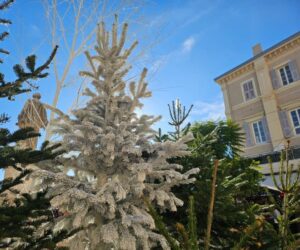Everything You Need to Know About Curling in Minnesota
Andrew.Parks
Mon, 11/25/2024 – 11:09
If you’re looking for a fun team sport to play during the winter, you’re in the right place because Minnesota just might be the best place in the country to try curling.
What To Read Next
Where to Go Deer Hunting in Minnesota
Read More
12 of the Best Restaurants and Bars in Downtown Rochester
Read More
Holiday Train Rolls Into Minnesota
Read More
Get help from the experts to plan your trip
Want to know the best spots in Minnesota? How about tips on how to make the most of your time in a specific city? Our Minnesota experts can answer your questions, offer advice, or plan the perfect Minnesota trip for you. For free.
Winter Sports
Article
Joe Widmer
Much like golf, curling is a game that is easy to get into and play for your entire life. It’s not uncommon to see curlers play well into their 80’s!
And Minnesota knows a thing or two about curling; many of the men’s and women’s curling Olympians call Minnesota home, including 2018 gold medal-winner John Shuster, who plays out of Duluth. According to the Minnesota Curling Association, Minnesota also has 37 established or emerging curling clubs.

An Olympic Trials Qualifier at Curl Mesabi Curling Club
/ Credit: C. Kerns Photography
WHAT IS CURLING?
Curling is a Scottish sport that began on frozen ponds and is still played in the relatively same way today — except indoors and with better equipment. Teams of four take turns sliding “stones” towards the “house,” which is the area where points can be scored.
The ice isn’t the same as the ice you’ve skated or played hockey on. Technicians spray thousands of droplets on it which give it a texture we call “pebbling.” This pebbling, along with the spin applied to the stone, allow players to curl stones around each other, leading to a variety of ways to get stones into scoring positions.
If you’ve ever watched curling on TV, you’ve certainly seen the “sweepers.” Sweepers are the teammates that have either already thrown their stones or will soon. This sweeping motion briefly melts a small portion of the ice and can allow the stone to travel further, as well as avoid obstacles that might be in the way. The strategy is determined by the player that throws last, called the “skip.”
Since only one team can score per “end” — much like an inning in baseball — the team that throws the last stone has a huge advantage, called “the hammer.” Who has the hammer dictates much of the strategy during the game, but the strategy of the game comes later. First, we need to get you on the ice!

Saint Paul Curling Club
/ Credit: Paul Vincent
WHERE CAN I TRY CURLING?
The very first step for most new curlers is to find a Learn to Curl (LTC) near them. Typically around two hours long, these events get you up to speed on the fundamentals of the sport and usually finish with a mini game. Players won’t need any special equipment to play; all curling clubs have extras for you to use.
It is totally normal for people to sign up alone, or in groups of two to 20, for these events. They are popular not only with people looking to try the sport, but also corporate groups, families, and even bachelor/bachelorette parties.
Your instructor will be an experienced curler that will not only teach you some tricks, but also explain curling’s unique culture, which is founded on good sportsmanship and lasting social connections.
When a curling game is over, it is tradition for the teams to sit with each other and socialize over a beverage and sometimes even a meal. It’s like a super club, but with a game before! These opportunities to socialize with new folks every week is why curling leagues are so popular, which is the next logical step if you’ve done your LTC and want to keep going.

A curling club at Wild State Cider in Duluth
/ Credit: Visit Duluth
WHAT ARE CURLING LEAGUES LIKE?
Curling leagues are no different than sports like bowling, darts or softball, with most days of the week and different times available. The curling season typically runs from late October through March, with some variations from club to club, including some that are open year-round.
If you ever find a curling league that you like but is full, consider being a substitute for teams that are short a player. It’s a great way to get your foot in the door for when an opening comes up.
Experienced curlers often take it one step further by playing in tournaments called “bonspiels.” They are usually multi-day events where teams play several games and there’s a focus on food, fun, and meeting new people. Minnesota has several bonspiels that attract teams from all over the country.

Saint Paul Curling Club
/ Credit: Paul Vincent
HOW CAN I FIND CURLING CLUBS?
Curling clubs are generally easy to find between Google Maps profiles and Facebook groups. Typing “curling club” near your home is a great place to start.
Along with your local search, several organizations make it easy to find a curling club near you. USA Curling has a great “find a club” function, and players in the metro can use a similar feature on the Twin Cities Curling Association’s website. The Minnesota Curling Association’s website has links to many of the state’s existing and emerging curling clubs, too, along with some helpful resources for new players.
Since each club handles their own LTC’s, leagues and bonspiels, it’s always best to reach out to them directly. Even if your club doesn’t have a LTC listed on their website, give them a ring; many clubs have instructors ready to go if a group is interested in trying the game.
Curling is a game that checks a lot of boxes for people: It keeps you active in the Winter, it’s a social game that puts just as much emphasis on fun as results, and you can play whether you’re eight or 80. Give curling a shot and you just might become one of the thousands of Minnesotans that make curling part of their annual winter activities.
Find more things to do in Minnesota this winter.

Saint Paul Curling Club
/ Credit: Paul Vincent








